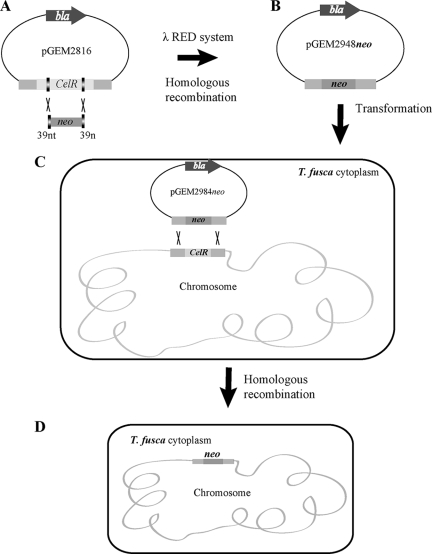FIG. 1.
Overview of the strategy used for replacement of celR in T. fusca. (A) A gene disruption cassette containing neo was obtained by PCR by using primers containing 39-nucleotide homology extensions corresponding to regions of the celR gene. The PCR product was transformed into E. coli BW25113/pIJ790 (expressing the λ Red recombination functions) containing pGEM2816. (B) The celR gene was replaced by neo using homologous recombination with the λ Red system to obtain pGEM2948neo, which was introduced into the methylation-deficient host E. coli ET12567. (C) Nonmethylated pGEM2948neo was transformed into T. fusca protoplasts with the help of PEG 1000. After overnight regeneration, soft R2YE agar with kanamycin was added to the plates, and they were incubated for two more days. (D) Double-crossover allelic exchange was confirmed by PCR and DNA sequencing. nt and n, nucleotides.

